While exceptional Paleolithic frescoes in the Cosquer cave, in the creeks of Marseille, are beginning to disappear due to global warming, the realization of its replica has just been announced.
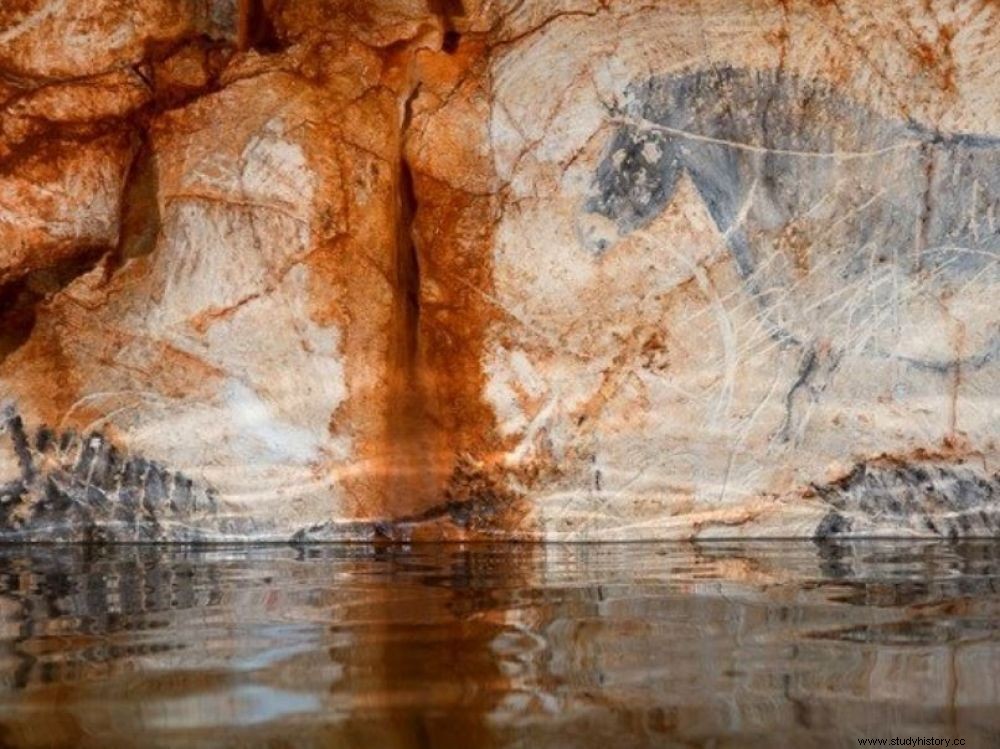
Testifying to the rising waters, horses adorning the walls of the Cosquer cave (Bouches-du-Rhône) are disappearing.
She is the eternally forgotten. And yet, it is a unique site in the world. Because it is immersed in the heart of the Calanques National Park, near Cape Morgiou, in Marseille (Bouches-du-Rhône), it rarely appears in the credits alongside its sisters from Lascaux (Dordogne) or Chauvet (Ardèche ). However, since its description in 1991, the Cosquer cave - named after its inventor Henri Cosquer - conceals admirable prehistoric frescoes dated from 18,000 to 27,000 years old, treasures of the heritage of humanity. Being below sea level probably does not help its media coverage! The cave is only accessible through a long submerged tunnel, the entrance to which is 37m deep under the cobalt waters of the Mediterranean, which only experienced divers can reach. 270 painted or engraved representations cover the limestone escarpments of the cave:ibexes, bison, megaloceros, felines, equines but also exceptional penguins, seals, jellyfish or cetaceans! However, all these prehistoric works are now threatened by global warming and the gradual rise in sea level. A threat which is increasing in a very worrying way, as the scientists responsible for its study have just warned.
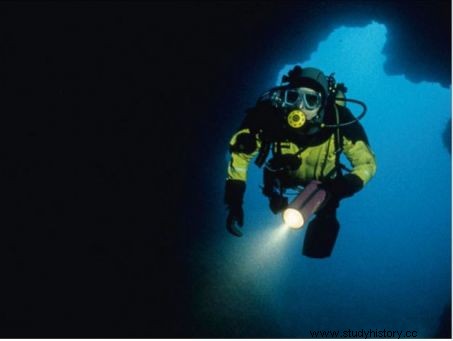
3D topographic surveys of the Cosquer cave can only be carried out by specialist divers. © Drac/Paca/Sra/Luc Vanrell/Michel Olive
The urgency of preserving the memory of these prehistoric marvels
"Some paints are more and more often under water and end up flaking due to the phenomena of limestone dissolution ", testifies Bertrand Chazaly, head of all 3D measurement operations for ten years.
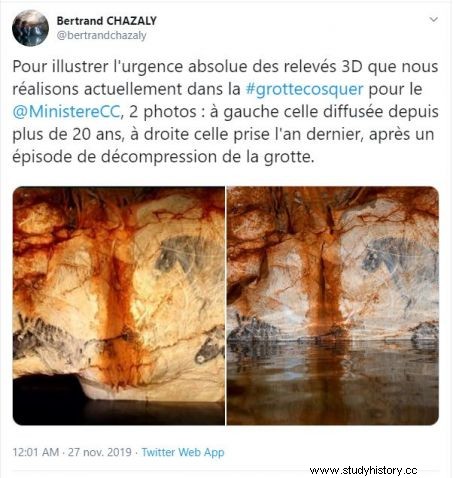
"The swell, together with the tides, causes a local rise in sea level , confirms Laurent Bruxelles, geoarchaeologist at the National Institute for Preventive Archaeological Research (Inrap), specialist in karstic massifs. This is reflected in the cracks of the rock all along the coast but even more in the open caves below sea level, with significant phenomena of fluctuation of the level of the water inside cavity, and pressurization ". Hence the urgency of preserving the memory of these prehistoric marvels. The decision to make a replica was thus officially announced on November 22, in Marseille, as there are already replicas of Lascaux and Chauvet. complete in 2022 and be presented at the Villa Méditerranée, a huge building located near the Old Port in Marseille. To do this, the project managers will rely on the surveys of the specialists who, since 2017, have been recording this treasure in 3D in difficult conditions as we had already mentioned in Sciences et Avenir .
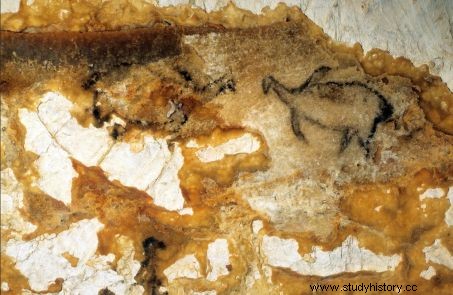
Among the prehistoric paintings in Cosquer Cave are some penguins, unique representations in Paleolithic art. © Drac/Ministry of Culture
"Photos taken 20 years apart clearly show the flooding of a sign featuring horses "
After crossing a dangerous 120m long submerged conduit, the scientist-divers cannot stay on site for more than 5 hours to carry out the 3D topographical surveys of the two main rooms:one of 55m by 44m, the another 54m by 15m. A challenging work carried out by a team made up for the most part of its members since 1994, including Luc Vanrell, scientific manager and curator at Immadras and Lampea at the University of Aix-Marseille, Michel Olive, from the Regional Archeology Service (SRA) of the Ministry of Culture, Bruno Arfib, of the Cerege laboratory and Bertrand Chazaly, expert in 3D geoscience, all collaborating under the aegis of the Regional Directorate of Cultural Affairs (Drac) and its department of regional conservation of historical monuments .
"Photos taken 20 years apart clearly show the drowning of a sign featuring horses ", explains the latter, responsible for three-dimensional surveys on behalf of the company Fugro, one of the rare geoscience companies in the world to be able to carry out these types of terrestrial and underwater 3D surveys. However, few prehistorians or specialists in parietal art have been able to study these remains of the Upper Paleolithic in situ, for lack of being able to enter the cavity because of its dangerous access. (It is indeed necessary to be holder of a Class B diving certificate)."You will have to do it before these frescoes disappear completely" , says Carole Fritz, specialist in prehistoric art, researcher at the CNRS, and current director of the scientific team at the Chauvet cave.
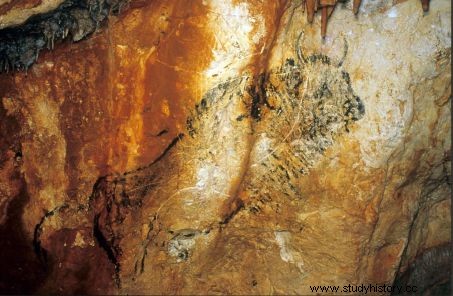
One of the aurochs adorning the walls of Cosquer Cave. © Drac/Sra/Ministry of Culture
The 3D digital photogrammetric surveys of the aerial part of the cavities being almost completed, the specialists are now focusing on the drowned parts. "We are increasingly constrained by weather conditions, with constant changes in the state of the sea observed over the past three or four years. This sometimes prevents us from diving at the last minute" , regrets Bertrand Chazaly. If the project is successful, the general public will finally be able to admire the replica of these masterpieces... in the process of drowning irreversibly.
